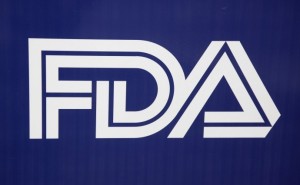Investigation into FDA Adverse Event Reporting System Reveals Flaws
 A recent investigation into the FDA’s adverse event reporting system reveals serious flaws that may delay the dissemination of timely information about risks and dangers associated with some prescription medications. The report, published by the Institute for Safe Medication Practices (ISMP), warns that improvements to this system are critical in order to alert consumers to potential injuries; without the implementation of the ISMP’s recommended changes, patients may continue to unknowingly put themselves at risk when taking medications prescribed by their physicians that they assume to be safe.
A recent investigation into the FDA’s adverse event reporting system reveals serious flaws that may delay the dissemination of timely information about risks and dangers associated with some prescription medications. The report, published by the Institute for Safe Medication Practices (ISMP), warns that improvements to this system are critical in order to alert consumers to potential injuries; without the implementation of the ISMP’s recommended changes, patients may continue to unknowingly put themselves at risk when taking medications prescribed by their physicians that they assume to be safe.
Adverse events scrutinized
The report looked at adverse events reported to the FDA over a period of one year between 2013 and 2014. All of the reports were either sent directly to the FDA through the agency’s MedWatch program or to drug manufacturers that in turn sent the information to the FDA. The events were all included in the U.S. Food and Drug Administration’s Adverse Event Reporting System (FAERS).
According to the study, events reported through drug manufacturers were much less likely to contain complete information. Less than half of these events reported during the 12-month time frame included vital information like patient age, gender or the date of the event. In contrast, around 85 percent of reports sent directly to the FDA included this information in full.
The ISMP also notes that adverse event reports infer the drug was responsible for the side effect. However, the current reporting system makes the establishment of causality complex, since a large number of transactions reported to FAERS do not even include a specific complaint related to the drug. Instead, the system is filled with interactions like refill reminders and patient education. In some cases, adverse events reported did not have any link to the drug, but instead were simply relaying underlying conditions the patient had. In fact, more than one-fourth of reports involving patient death did not include any information about whether the drug played a role in the death.
Reporting gaps compromise patient safety
Gaps in the current reporting system can make it that much more challenging for the FDA and healthcare community to track potentially dangerous drugs with any degree of accuracy. For patients that have been injured after taking those drugs, the consequences can be life-altering. Some drugs, like Granuflo and Xarelto, have resulted in deadly side effects for some patients. Others, like Propecia and Risperdal, have led to serious side effects that did not improve even after the medication was stopped.
Unfortunately, many drugs that are suspected of serious side effects in their early stages, such as testosterone therapy, cannot be accurately monitored without a consistent and accurate reporting system. Drugs that lead to side effects like birth defects, such as those associated with Zoloft, rely on adverse event reporting, since clinical trials to explore those side effects cannot be conducted in an ethical fashion. The same is true for drugs that are believed to increase the risk for some types of cancer, such as Actos and Januvia.
Filing a dangerous drug lawsuit
Patients that are injured by these drugs do have the option of filing a lawsuit to pursue damages for their injuries and other non-economic losses. In those complaints, patients must be able to prove that the drug was directly related to the side effect and the drug manufacturer failed to provide proper warning about the risks. However, lawsuits do not replace loss of function or sadly, loss of life for some of these patients.
The investigation into the FDA adverse event reporting system did make recommendations on how the FAERS system may be improved. Modernizing the reporting system is one obvious solution, while the development of new and usable protocols for reporting events may involve more discussion and debate. However, the ISMP does assert that improvements to the system are important and even necessary to increase patient safety in regards to prescription medication.
- Institute for Safe Medication Practices, A Critique of a Key Drug Safety Reporting System, http://www.ismp.org/QuarterWatch/pdfs/2014Q1.pdf
- FDA, Potential Signals of Serious Risks/New Safety Information Identified from the FDA Adverse Event Reporting System (FAERS), http://www.fda.gov/Drugs/GuidanceComplianceRegulatoryInformation/Surveillance/AdverseDrugEffects/UCM082196
- New York Times, Drug Makers’ Data on Side Effects is Called Lacking in Report, http://www.nytimes.com/2015/02/03/business/drug-makers-data-on-side-effects-is-called-lacking-in-a-report.html?_r=1
- Web MD, Drug Side Effects Explained, http://www.webmd.com/a-to-z-guides/drug-side-effects-explained
- CDC, Therapeutic Drug Use, http://www.cdc.gov/nchs/fastats/drug-use-therapeutic.htm


 Resources
Resources
 Resources
Resources
